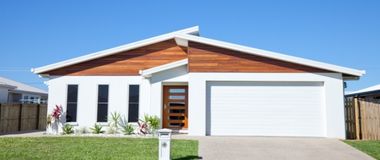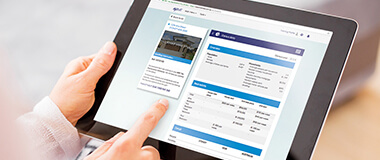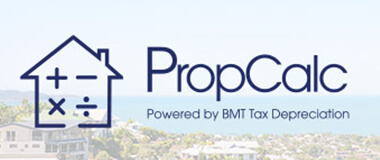Unlock mortgage relief and tax benefits by transitioning from owner-occupier to landlord
The Australian property market is once again recalibrating. While the growth in housing values has moderated and more properties are coming onto the market, the rental sector remains a standout performer. This vibrant rental market offers exciting potential for property owners to rethink and diversify their investment strategies.

One emerging trend we've observed at BMT is owner-occupiers transforming their homes into rental properties; stepping into the role of landlords. Last year close to 27 per cent of depreciation schedules completed, transitioned from being owner-occupied to income-producing, a 4 per cent increase from the previous year. This proactive approach not only unlocks the income potential of these properties but also allows owners to retain valuable assets.
Close to a third of Australians are currently under mortgage stress and for many, generating rental income provides a smart way to ease mortgage repayments, while retaining their properties and taking advantage of capital growth.
This is a testament to the adaptability and forward-thinking mindset of Australian property owners and investors.
An owner-occupier with a property worth $920,000 and a $644,000 mortgage at 6.21 per cent over 25 years, has monthly repayments of $4,242. Facing financial stress, the owner switches to an interest-only loan at 6.5 per cent, reducing repayments to $3,489 monthly. They downsize and rent a smaller property for $2,600 per month. Total monthly expenses are now $6,089. Renting out their home for $3,900 per month, they face net out-of-pocket costs of $2,189 which is $2,053 per month less than their previous scenario before all tax deductions are claimed.
When a property becomes income producing, many expenses related to the property, including property insurance, rates and management fees, are tax deductible. According to the latest ATO data, property investors claimed an average of $7,265 on mortgage interest, an average of $1,255 on council rates and an average of $1,169 on maintenance and repairs (among other deductions).
Property depreciation is an important additional tax deduction claimed for the natural wear and tear of an income-producing building and its assets over time. It is generally the second largest tax deduction for property investors and as a non-cash deduction, can be claimed without incurring any expense. In the latest ATO data, landlords claimed an average of $3,834 for property depreciation. BMT data reported an average claim of $9,692 that same year, and in the FY 2023/2024 reported an average claim of $11,432 for both new and second-hand residential property.
Below is an illustration of how the cash flow of the owner-occupier turned landlord, is positively impacted when property depreciation is claimed on the rental property.
Table 1: Cash flow on $920,000 property rented out at $900 per week before and after depreciation
| Townhouse rented out at $900 per week |
Without depreciation |
With depreciation |
| Pre-tax cash flow | ||
| Annual rental income | $46,800 | $46,800 |
| Annual property expenses | $55,300 | $55,300 |
| Total taxable income (income less expenses) |
-$8,500 | -$8,500 |
| Depreciation claim | $0 | $11,200 |
| Total taxable income (income less expenses and depreciation) |
-$8,500 | -$19,700 |
| Post-tax cash flow | ||
| Tax payable / tax refund (taxable income x 37% tax rate) |
$3,145 | $7,289 |
| Net cash flow (annual) | -$5,355 | -$1,211 |
| Net cash flow (weekly) | -$103 | -$23 |
| Difference of $80 per week or $4,144 per annum | ||
By claiming tax deductions on the wear and tear of a property's structure and easily removable or mechanical assets added to the property after vacating and preparing the property for tenants, the landlord can significantly reduce their taxable income and increase annual cash flow by $4,144. A depreciation schedule prepared by a depreciation specialist can help maximise tax deductions and ensure compliance with ATO regulations.
Transitioning from owner-occupier to landlord offers a pathway to leveraging a property for financial gain and potential capital growth, but there are various factors to consider to ensure the transition is both compliant and financially rewarding.
It is important to note that transitioning from an owner-occupier to a landlord could have capital gains tax (CGT) implications if the property is sold in the future. While a primary residence is generally exempt from CGT, this exemption may be partially lost once the property becomes an income-producing asset. The CGT liability is calculated based on the property's value increase during the rental period and the potential tax payable could reduce the overall financial gain from the sale.
Seeking advice from accountants, property managers and tax depreciation specialists like BMT Tax Depreciation, provides invaluable insights into the full implications and benefits of this transition.
At BMT, we specialise in helping investors maximise the potential of their investment properties. If you're considering becoming a landlord, contact us on 1300 268 628 to discover how property depreciation can increase your cash flow or Request a quote.



























